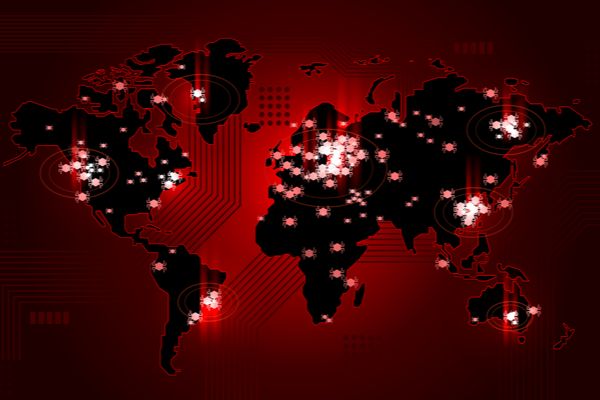Capital Gazette Shooting Proves Security Isn’t Just for Public Buildings Anymore
June’s mass shooting at the Capital Gazette office in Annapolis, Maryland, has many traditional workplaces looking to enterprise security systems to...
3 min read
 Tony Pugielli
:
Mar 24, 2022 4:35:29 PM
Tony Pugielli
:
Mar 24, 2022 4:35:29 PM

While the war in Ukraine is thousands of miles away, domestic cybersecurity professionals must pay close attention to stay ahead of emerging threat actors.
We’re all watching the situation taking place in Eastern Europe and our thoughts are with the people of Ukraine. Of the many takeaways we can learn from afar, one of the most prominent is that cyberwarfare continues to position itself at the forefront of international conflict. They may not be happening in our backyard, but the lessons we can learn from the recent cyberattacks against Ukraine are as relevant as ever.
Hackers are notoriously adept at circumventing systems and will always have a greater incentive to exploit vulnerabilities, endeavoring to stay one step ahead of the latest cybersecurity methods. In turn, cybersecurity experts must quickly adapt to fix exploits before too much damage is caused. This endless game of cat and mouse is the reality of the cybersecurity world, meaning it’s up to cybersecurity experts to learn from the latest cyber attacks in Eastern Europe if they want to keep their adversaries at bay.
In the early days of the conflict, long delays at border crossings between Ukraine and Poland were ultimately blamed on a cyber intrusion to passport verification systems, forcing processing systems back to a pen and paper format. This led to long lines and poor conditions for refugees seeking asylum from the growing conflict.
An even more ominous attack was in the works. Microsoft’s Threat Intelligence Center, a specialized unit of Microsoft’s cybersecurity team, got a glimpse of a unique “wiper” malware they called “FoxBlade.” Just hours before Russian armed forces crossed into Ukraine, FoxBlade was deployed to target Ukrainian government organizations and their networks to disrupt operations and potentially disable key infrastructure and financial systems. This could have left the Ukrainian people and military forces without power and cellular communications.
Unfortunately, unique forms of malware like FoxBlade or their variants often end up on the dark web for sale to anyone with enough cryptocurrency — meaning wider access for hackers and bigger threats for organizations.
The speed of the FoxBlade attack spiked concern not because it was a novel form of malware — but because the targets were already identified and vulnerabilities in those systems were already present. Thanks to foresight by cybersecurity and IT teams from around the world, procedures and protections were in place to ensure a rapid response to any intrusion and strive to quickly fix any issues as they arose.
While there are no confirmed cyberattacks connected to Belarusian and Russian cyberattacks on U.S.-based organizations or companies, there have been numerous intrusions within systems in Europe connected to these hackers. In light of these increased and varied attacks, CISA issued a warning for U.S.-based entities to prepare for possible disruptions via cyberattacks. Furthermore, Palo Alto Network’s Unit 42 outlined security implementations specifically designed to counter newer variations of wiper attacks like FoxBlade.
What implications do FoxBlade and other new malware variations have on your organization’s cybersecurity efforts? To protect your organization’s assets and safeguard against future forms of cyberattacks, you and your IT team should prepare for every contingency as threats evolve and change. Here’s what you can do to immediately improve your cybersecurity:
At the end of the day, the best thing you can do to stay secure is to keep your core systems up-to-date and work with an informed IT partner you trust.
The cybersecurity team at TTI is capable of evaluating your network and organization from the ground up to provide a right fit solution to keep you secure. If you’re uncertain about the integrity of your cybersecurity solutions, take advantage of our free Cybersecurity Assessment Tool or contact us for a detailed assessment.

June’s mass shooting at the Capital Gazette office in Annapolis, Maryland, has many traditional workplaces looking to enterprise security systems to...

The internet has become yet another front for international warfare over the past decade, which makes robust enterprise cybersecurity an increasingly...

Conventional wisdom suggests hackers have the upper hand in the war for cyber-supremacy, but deception technology has the potential to tip the odds...